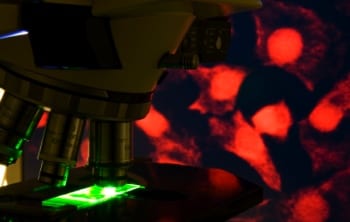
Each type of cancer has its own idiosyncrasies, but when it comes down to it, they all have one thing in common: failure to control cellular growth. So it’s somewhat surprising that when genome-wide association studies have looked for single common variations associated with the risks for multiple types of cancer, they have for the most part identified only SNPs that are peculiar to just one form of the disease.
A new study published online Sunday in Nature Genetics may signal a change in this trend. A team of researchers led by Thorunn Rafnar and Patrick Sulem of deCODE Genetics in Iceland describes how a genetic variation they originally found to be associated with the risk for developing basal cell carcinoma (BCC), a type of skin cancer, is also linked to increased odds for four other cancers.
In a study of more than 33,800 cancer patients and 45,800 controls, the scientists found that a variant associated with increased odds of lung, bladder, prostate and cervical cancer, in addition to the previously found association with BCC. This variation decreases the odds of cutaneous melanoma, another type of skin cancer.
The variant was also marginally, although not significantly, associated with increased odds of endometrial cancer and decreased odds of colorectal cancer.
There was no association of the SNP with cancer of the breast, kidney, stomach, thyroid, ovary or pancreas, nor with lymphoma, multiple myeloma or squamous cell carcinoma (a third type of skin cancer). The authors say that further investigation in even larger samples will be needed to determine if there truly is no association, or if they just haven’t picked it up yet.
An association was also found between a nearby variant and four of the five cancers that were associated with it.
Both SNPs are near a gene involved in maintaining the protective stretches of DNA attached to the ends of chromosomes called telomeres. The authors suggest that these SNPs, or other nearby variations, may lead to shortened telomeres, which are associated with several types of cancer.
Telomere length is determined in part by genetics, but environmental factors such as smoking and radiation can also shorten them. The authors note “four of the five cancers associated with the risk variants are cancer types that have strong environmental contributions to risk — smoking and occupational exposures for lung and bladder cancer, UV irradiation for BCC and infection with human papillomavirus for cervical cancer.” More research could help explain the exact relationship between the genetic variations found in this study and the environmental causes of these cancers.



